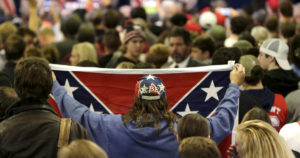“If the problem of the twentieth century was, in W.E.B. Du Bois’s famous words, “the problem of the color line”, the the problem of the twenty-first century is the problem of colorblindness, the refusal to acknowledge the causes and consequences of enduring racial stratification.” Naomi Murakawa
After the results of the 2016 Presidential election, many people felt a sense of pride for finally receiving a type of governmental change that would be different from the norm. Even though this was a great moment for many people, for others it was the complete opposite. The day after the election, many minorities including myself felt an overwhelming feeling of fear, the fear of existing in a society that does not value their existence as much as they would hope. Imagine living in a society where a Presidential candidate can build their entire campaign off of hate and discrimination of different racial groups, and they still end up being the next President of the the land of the free. It almost sounds like a fictional story, however it is the reality that many minorities are facing today. The problem that is left by the racially filled campaign is what is troublesome, and it is what brings fear to Muslims, African Americans, LGBTQ, and Latino communities.
The 21st century is the age of being colorblind, many people use this term to express how they feel about racial inequalities within our society. This concept is one that is widely used to explain peoples stance on racial issue instead of acknowledging the severity of the problems. What this election cycle showed was how severe the racial tensions in the United States really are, people who claim that they were colorblind and could not see color were forced to recognize the discrimination that plagues our society. For us minorities, this is nothing new this is what we’ve known from an early age. We are thought to act a certain way and function within a society in order to fit into the niche that is considered the common norm. This is the way society was established for all who falls under the category of “the others”. Many people did not acknowledge that there was a racial problem in the United States in this day an age until some recent events, at the same time there are many people who refuse to acknowledge it.
The damage that the Trump campaign left on this already battered society is what is important for people to understand. While walking in the hall way at school I heard someone say that minorities were being dramatic for their reaction to the Trump being elected, even though people were just fearful for their wellbeing. What people must understand is that minorities have to learn at a young age that they are different in society and will not have the same privilege as their white peers. It is not a difference such as personality or interest but it is a racial difference that dates back to the time of slavery, Jim Crow, The Civil Rights Movement, and Now the #BlackLivesMatter movement. For those who thought that racism died when President Obama was elected, they were proved wrong by this campaign. The biggest problem with racial inequality in this country is peoples refusal to acknowledge the fact that racism is alive and well, and we as a nation has a long way to go before there are further advancements to racial equality. 
